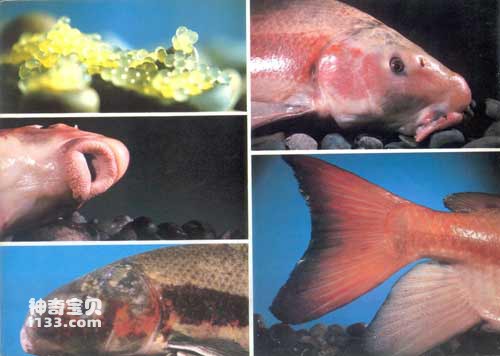The colors of some fish species vary significantly from juvenile to adult fish, depending on their individual development stages and habitats. For example, the mullet fish has a gray-brown body in its juvenile stage, with three wide black horizontal stripes on both sides of the body. Each fin is light red, with dark black spots of varying sizes distributed on it. As the individual develops, by the second year, the three wide black horizontal stripes on the side of the body gradually blur, and the side of the body becomes a light red background covered with dark black spots of varying sizes. When sexually mature individuals, the body is yellowish brown, pink or purple, and there is a broad scarlet vertical stripe on the side of the adult fish from the tip of the snout to the base of the tail. The color of the male fish is bright, while the color of the female fish is dull, so fishermen have different opinions on it. Individuals with different body colors are called yellow rows, blood rows, pink rows and green bodies. Young salmon and trout have special patterns called juvenile salmon markings, which disappear completely when they grow up.

The male and female colors of many fish are different, especially during the reproductive period, which is more obvious for species that need a mate and can perform certain courtship dynamics. The male is usually more beautiful than the female. Almost all killifish, cichlids, bettas, damselfishes, wrasses, etc. are the same. Cyan, red, green, black and silver are the characteristics of male fish, while female fish are usually darker. During the reproductive period of many cyprinids, the males appear with beautiful colors, especially in the lower part of the body, with bright red or cyan pigments. This color becomes more and more intense due to emotional excitement during the courtship process. The thicker.
During the reproductive period, both sexes of the three-spined stickleback change color. The dark green on the back turns into a vertical band on the side of the body. The lower part of the body changes from silvery white to grayish yellow in the female, and turns to beautiful red in the male. The black spots scattered on the olive body of the male Ten-spine Stickleback now turn into dark brown. Species with disexual colors are common in both marine and freshwater fish, but marital colors are very rare in marine fish, but very common in freshwater fish.
animal tags:
We created this article in conjunction with AI technology, then made sure it was fact-checked and edited by a Animals Top editor.